COLORADIO is a speaker which detects the color of whatever object is placed in front of it. The speaker plays different types of music depending on the color. You don't need any particular objects, instead, every object becomes a tangible input to start the music.
This was a group project done as a submission for the 9th International Conference on Tangible, Embedded, and Embodied Interaction Student Design Competition. After finding out about the competition at a lecture on Friday, I put together a team of people, and we had a prototype and complete submission by the following Wednesday.
HOURS 0-8 - EMPATHIZE, DEFINE, IDEATE
We began the project by brainstorming possible ideas for a "tangible remote control". We used several design thinking methodologies, including facilitated "brain dumps" with post it notes, targeting, and deep diving.
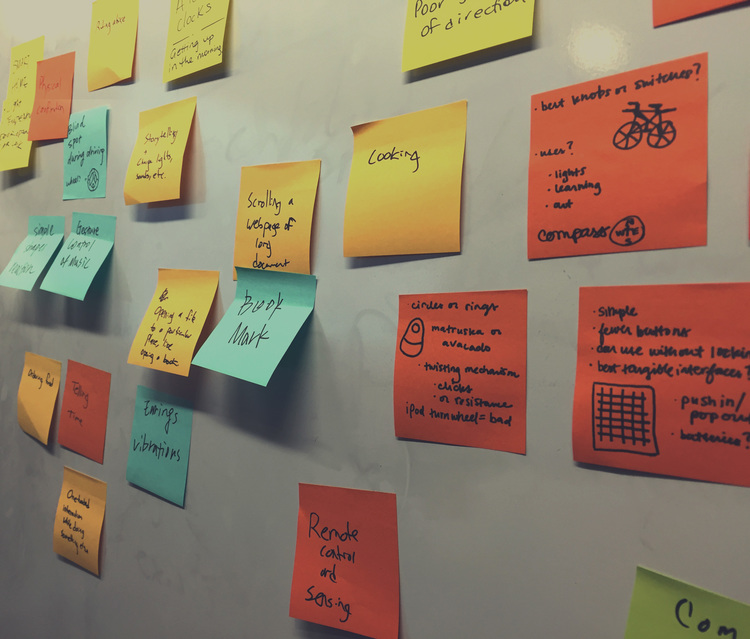
Using these methods, we discovered the benefits and negatives of using a tangible user interface as a remote control, and we began to focus our efforts on creating something that maximized the benefits and minimized the negatives. The biggest negative we discovered is the need to use "special" tangible objects which have some sort of sensor or other electronics in them in order to interact. This means that the users have to always have these objects with them, and objects with sensors are generally more expensive than objects without them. We also began to play around with the idea of "tangible" and what that meant, including involving different senses than just touch.
We came up with the idea to use the color of physical objects as a remote control. There would be a small box containing a color sensor, which would detect the color of any object placed in front of it. Thus, any object becomes a tangible remote control. We settled on music as the thing to be controlled, because people listen to music a lot, in all kinds of different contexts and settings, and they already have some sort of association between color and music.
HOURS 9-20 - PROTOTYPE AND TEST
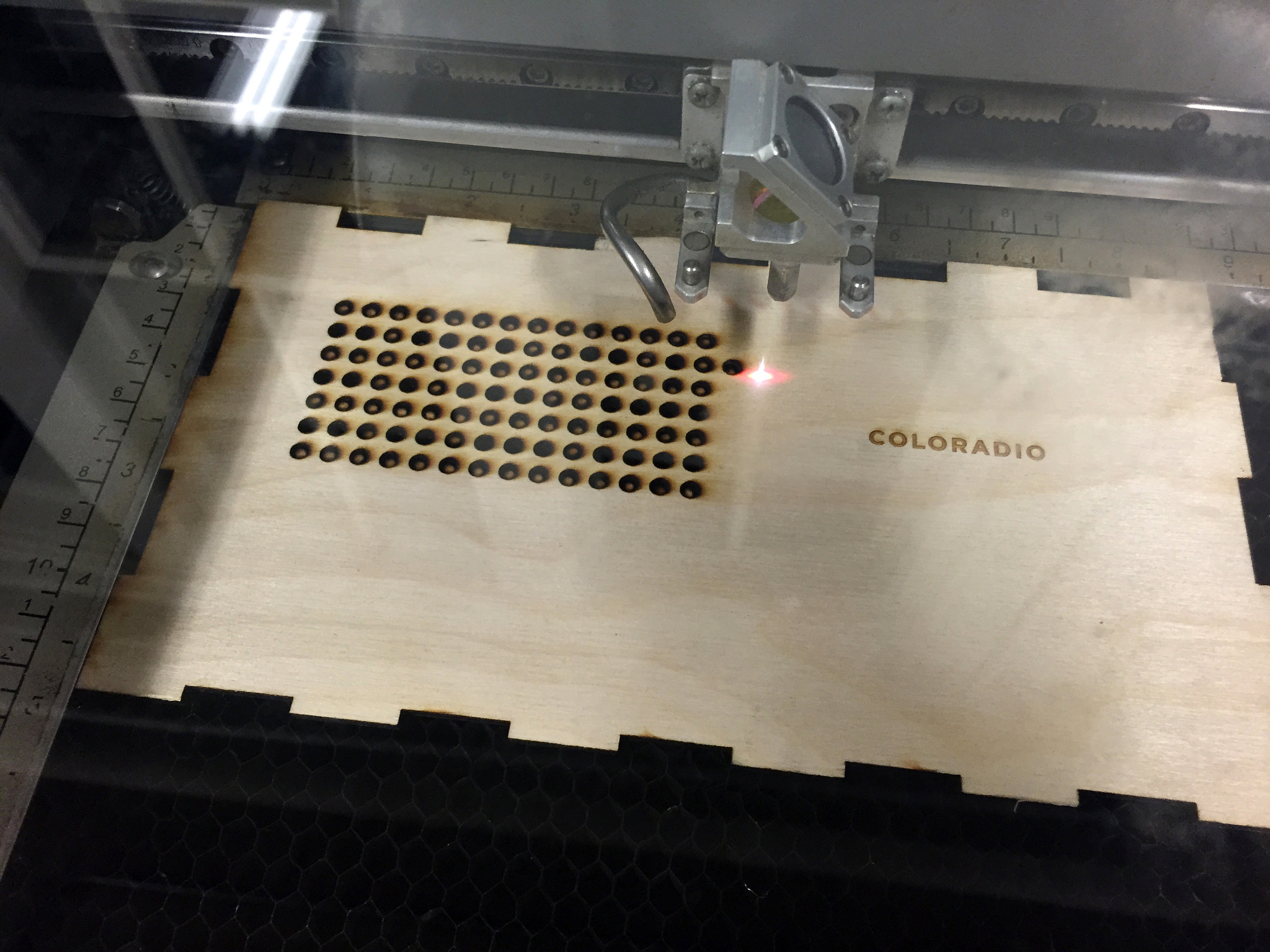
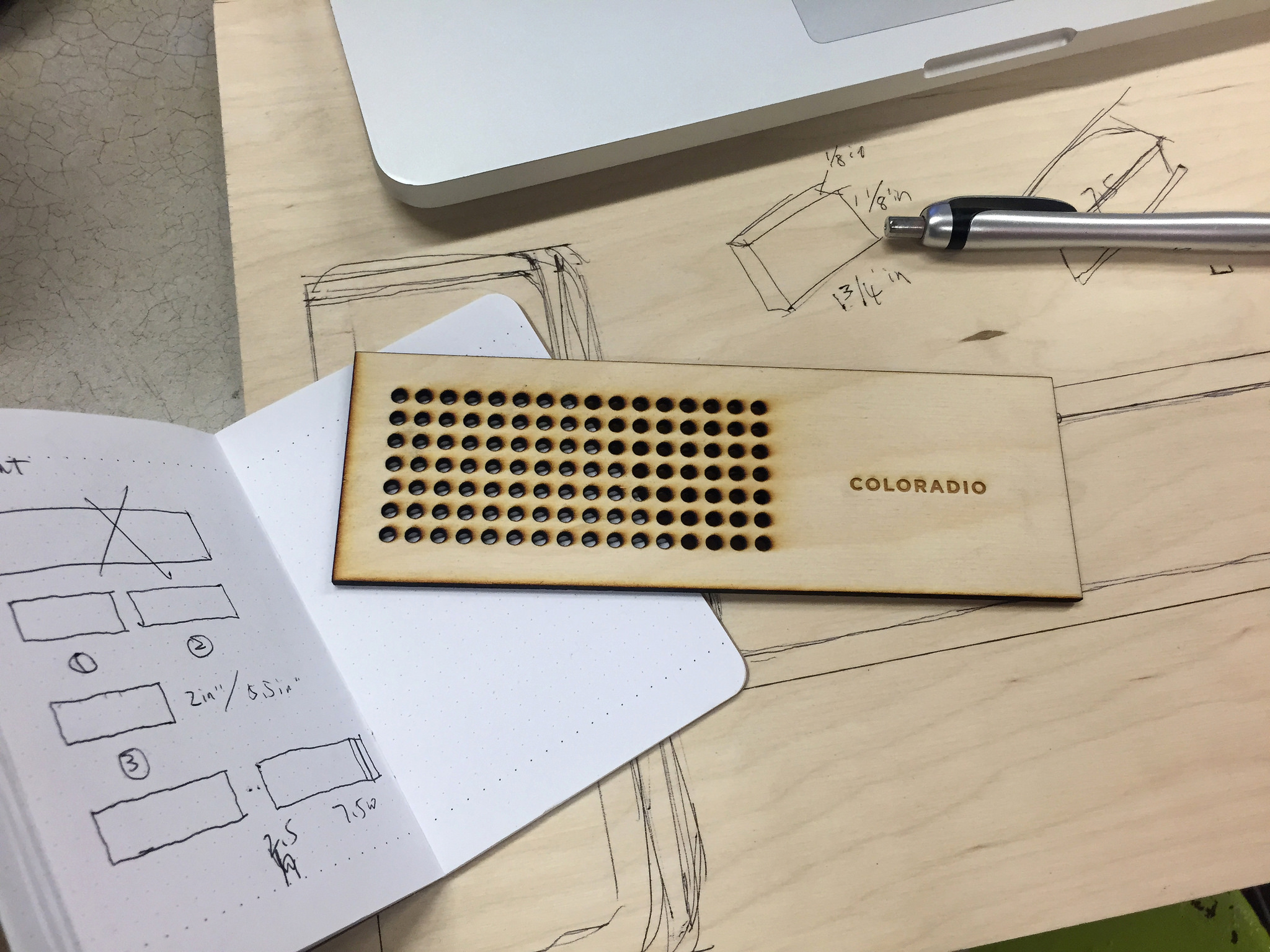
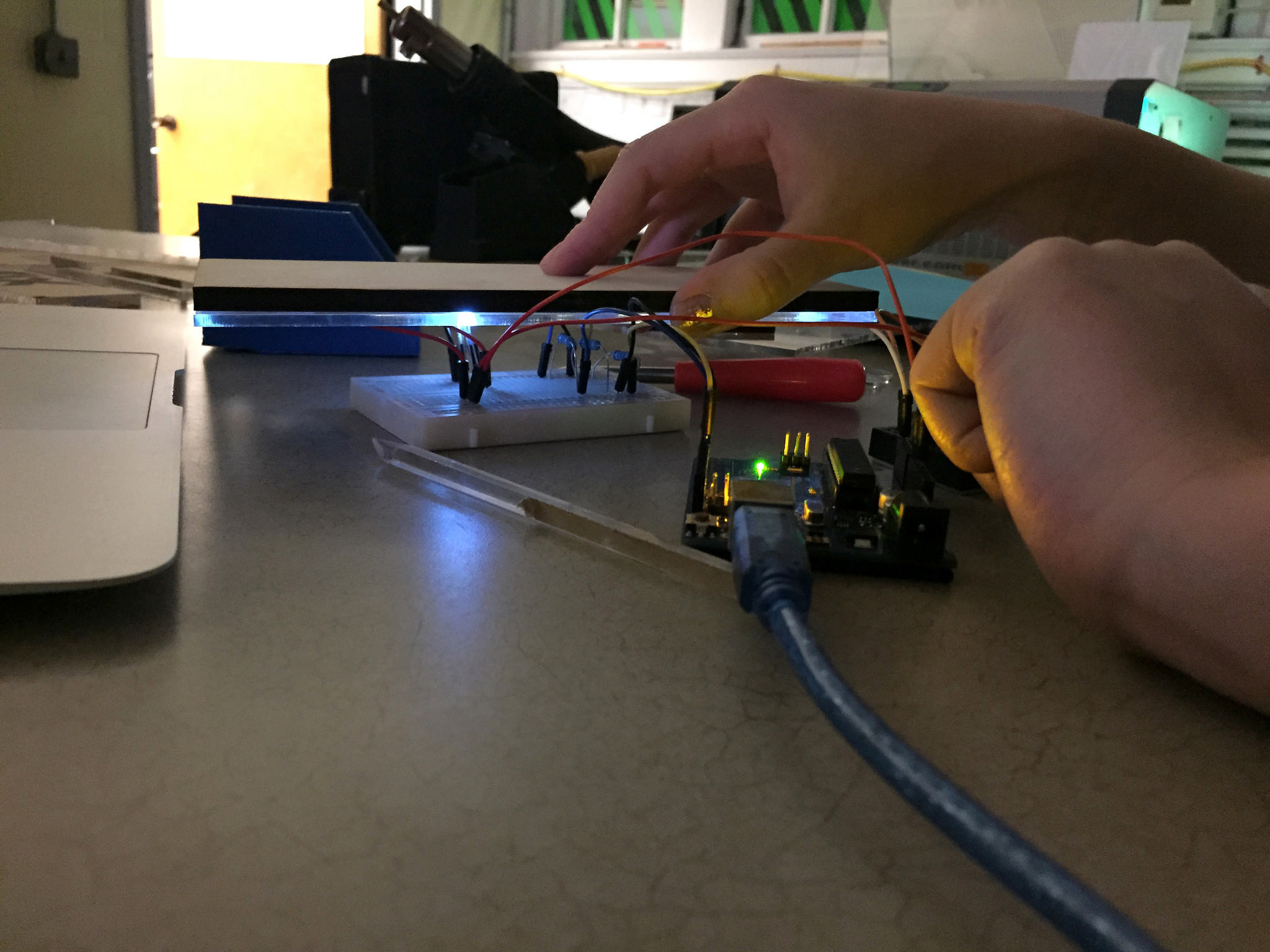
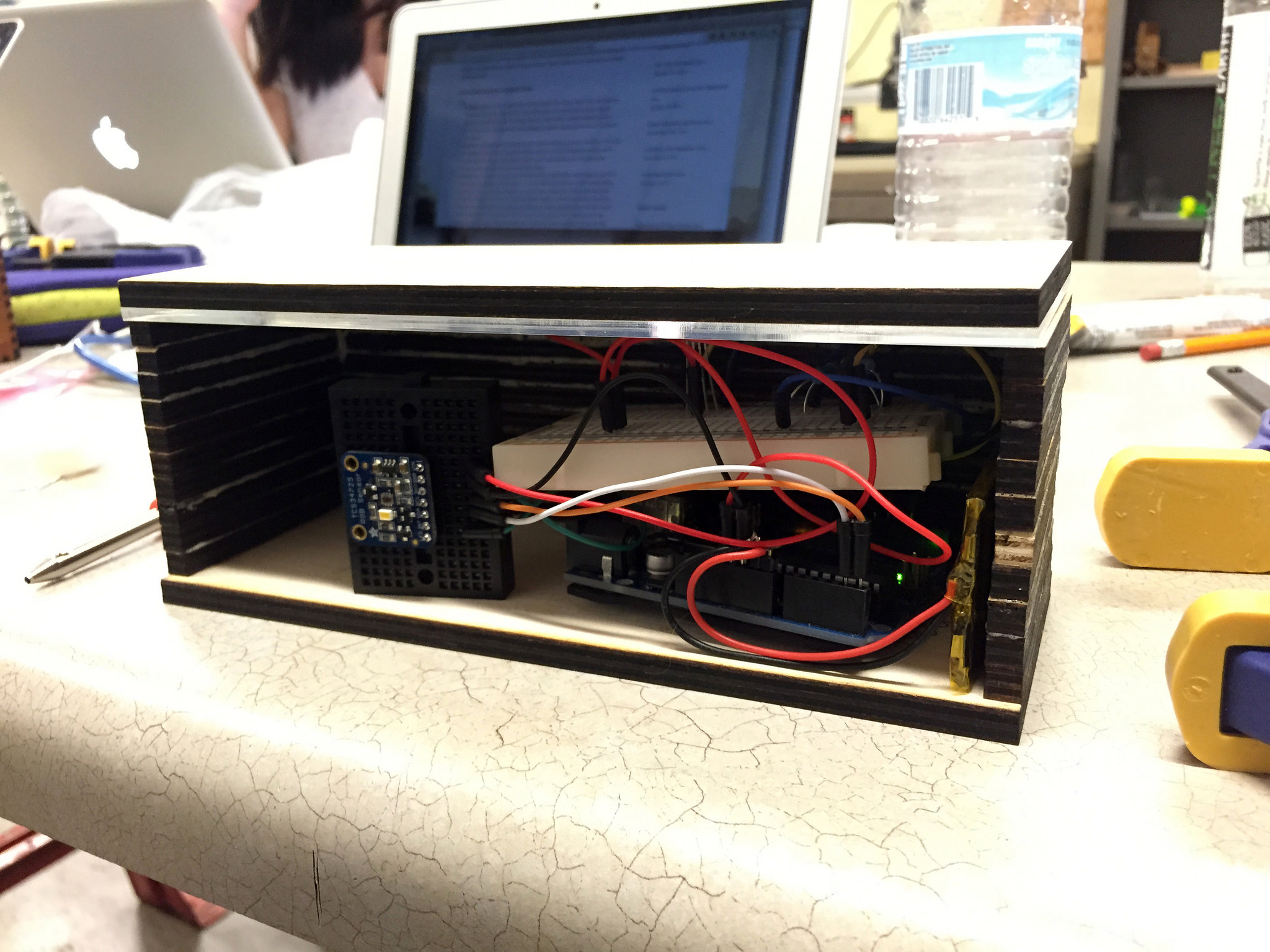
For the next steps, we moved to the Champaign-Urbana Community Fab Lab to design and construct our prototype. We built a laser cut wooden box, with a speaker grille that would conceal the color sensor. There would be an Arduino microcontroller inside to read the color sensor and power an RGB LED which illuminates an acrylic strip axially. The whole thing is powered by a rechargeable lithium-ion battery. For our initial prototype, we left our the speaker and music playing capability, as our goal was to build a proof of concept that we could build a small sensor to detect the color of objects placed in front of it.
HOURS 21-31 - DOCUMENT AND SHARE
With our prototype complete and functioning, we moved on to shooting the video.
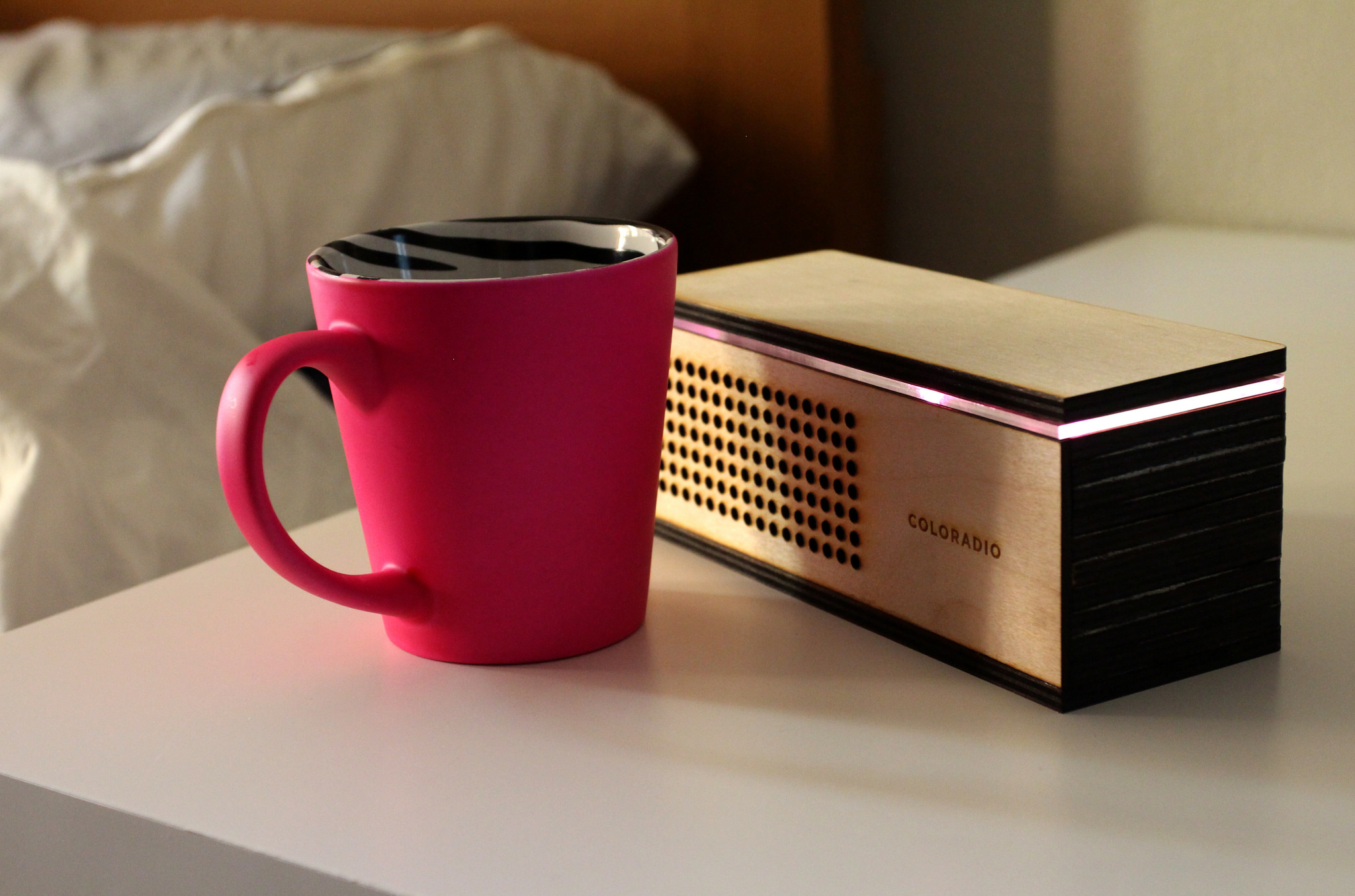
In our video, we tried to show what the experience of using a fully functioning version of our prototype would be like. We showed it in the many contexts of a person's daily life, from waking up, to working, to being outdoors, to having a party.
PRESS
Graduate School of Library and Information Science Newsroom: http://www.lis.illinois.edu/articles/2015/01/coloradio-puts-new-spin-mood-music
Although we weren't accepted to the conference, we have been discussing further applications of using the color of everyday objects as a user interface. We have also been discussing some of our other ideas that we generated during our initial brainstorm, such as using temperature as both an input and an output.
Through this project, I got more experience with facilitating a design project, and using design thinking methods. Some of these methods I had learned in class, and some I had learned at my summer internship with Workday. It was really helpful to me to be able to put these ideas into practice in my own project.
I learned how to use the Adafruit library for the color sensor, as well as how to control an RGB LED. I also got practice with building an edge lit acrylic device.
I also got hands-on experience in designing how to construct a three-dimensional consumer product which is meant to look good as well as be functional, and contain all of the necessary components. It also has to be easily assembled.